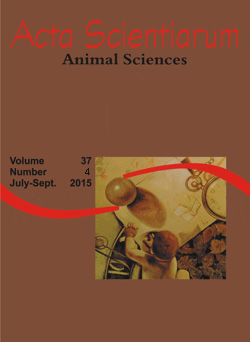<b>Genotype by sex interaction at different phases during Nile tilapia culture period
Abstract
Co(variance) components and genetic parameters were estimated for performance and morphometric traits in male and female Nile tilapia at different growth periods to verify the need for separate selection programs for the two genders. Data set contained information on 1,720 animals, collected in cage system. Two-trait analyses using Bayesian methodology were conducted and the records of males and females were considered distinct traits. Rates of additive genetic variance, phenotypic and heritability were higher for females in estimates for morphometric traits and higher for males in performance traits. Whereas common hatchery environment showed higher relative importance for males, the nursery caused greater variations in females. The reduction of the genetic correlation rates caused by growth increased the difference between genders and indicated the treatment of males and females as a distinct feature selection.
Downloads
DECLARATION OF ORIGINALITY AND COPYRIGHTS
- I Declare that current article is original and has not been submitted for publication, in part or in whole, to any other national or international journal.
The copyrights belong exclusively to the authors. Published content is licensed under Creative Commons Attribution 4.0 (CC BY 4.0) guidelines, which allows sharing (copy and distribution of the material in any medium or format) and adaptation (remix, transform, and build upon the material) for any purpose, even commercially, under the terms of attribution.
Read this link for further information on how to use CC BY 4.0 properly.








































